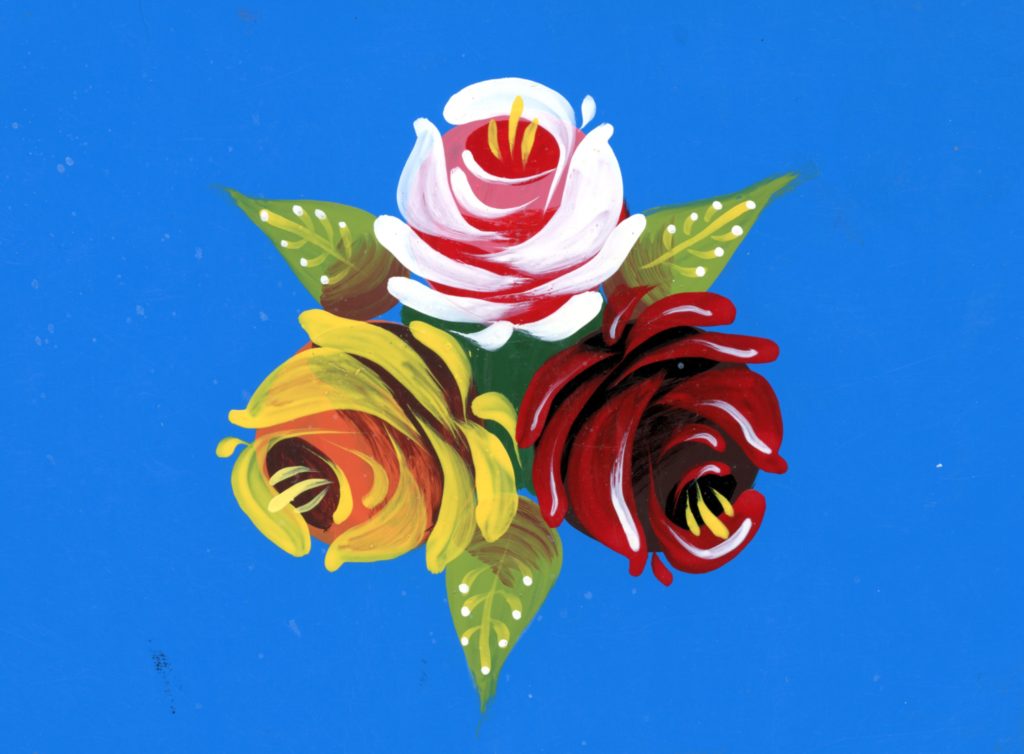INTRODUCTION
The very earliest of flower patterns were a more realistic representation before increased popularity and demand led to stylisation. Stylisation gave the advantage that designs could be painted at speed. Narrow Boats would not earn money while laid up for painting so the decoration had to be completed quickly. The traditional flower patterns were usually made up of roses and daises but in more recent times individual painters have developed flowers of their own which have been incorporate into the traditional designs.
SWAGS
Groups of flowers are sometimes refered to as swags. These vary in layout depending on the panel size or available space. To produce a swag that really stands out there needs to be free space around the design so the eye can see a distinct gap between the flowers and any other decoration or moulding. Flower patterns need carefully planning to give the idea that the flowers are sitting on the leaves as they would naturally. Swags can either be planned out on paper, or drawn straight onto the available space.
PAINTING STAGES
Flower patterns are built up by painting layer on layer in an almost continuous process until complete. The basic leaf pattern is painted with a base colour first, following by shading and finishing with veins. Like all aspected of canal art the usuall practise is to use the biggest brush possible and as few brush strokes as possible to complete the process quickly. The traditional roses come in three colours of red, yellow and white. These are also built up in layers, base colour, shading, petals (sometimes with highlights) and finally, stamens.
ROSE DESIGNS
Roses painted by different painters often contained similar techniques but each person put their own stamp on the design although within a boatyard the design was often passed on from generation to generation. The most common and simplest design was known as the Midland Rose. When I joined the Waterway Craft Guild the comprehensive feedback I received stated that the design I was using could be improved. That 1991 design is shown above. In 1999 I changed the design of my Midland rose and because of the approaching Millennium, I called my new version the Millennium Rose. That is shown below.

